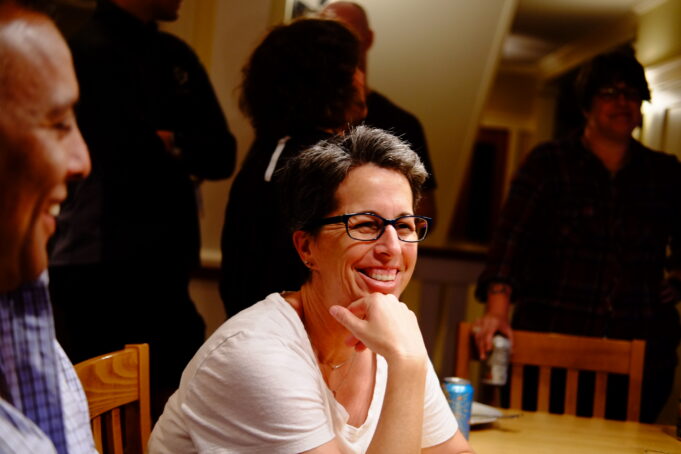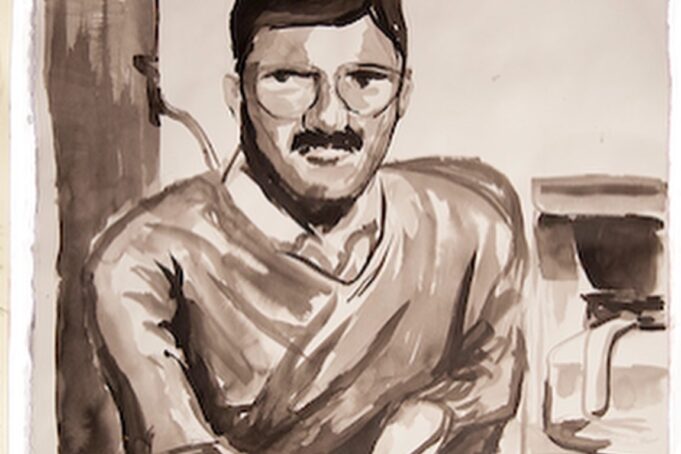People regularly approach me to share ideas they have for new apps. This is great because I love to talk to people who are excited about some new thing they’ve noticed and want to bring into the world. But they are often coming to me because they are stuck between their idea and knowing what to do next. And there are a few common myths that often stand between the idea and starting.
Let’s walk through them and remove these barriers to you getting started right now.
MYTH 1: THE IDEA IS THE HARD PART
There is a popular idea floating around that the big gap between nothing and success is having a good, new idea. It’s true that good ideas, new insights, often at the intersection of divergent perspectives or new experience colliding with established wisdom produce innovation. However in my experience, the big gap is not between nothing and a good idea. It’s between the good idea and the execution of that idea. Or what Seth Godin calls “shipping the work,” that is, breaking the good idea down into an executable project, saying publicly you are working on it, owning all the pieces and getting it done. So if you have a good idea, don’t go looking for an app maker to make it for you. Instead, download Seth’s Ship It Journal PDF and fill it in.

MYTH 2: I NEED A DEVELOPER BEFORE I CAN START
This one is very popular and couldn’t be more wrong. Developers are in the business of taking vague ideas and thinking through them to such painful, specific clarity that they can make computers behave in ways humans find predictable and delightful. But they can’t do that before you have at least mapped out the basics of how you want the app to work. Actually, they can, but there will be a huge undefined space of un-thought-through assumptions that they will have to make specific decisions about. And those decisions will differ from your expectations in important ways resulting in everyone being frustrated. The whole process of product design and development can be reduced down to minimizing the gap of ambiguity between the idea in your head and the idea in the head of the people who will actually make it work.
The good (and terrifying) news is that you don’t need anything but your ideas, a pencil, and a ruler to start making your idea real.
Draw out each screen of the app on paper, the actual size it will be and then write notes around it describing what each button does. Do one sheet per screen and don’t use Lorem Ipsum or placeholder text. The process of thinking what each button and interface item would say will bring more clarity to your idea. This should take about a half an hour per screen. I can hear you protesting, “but I can’t draw a straight line.” That’s what the ruler is for.
Many people like to do this kind of sketching and prototyping in Powerpoint or Keynote. Others jump straight to design tools like Sketch App or Adobe XD. But I find that the first step on paper forces me to find the most critical details and not get distracted fiddling with colors or type.
Don’t worry about whether your idea is technically possible or not. That’s for your eventual developer partners to help you answer. And they can’t answer it with precision if you don’t have it thought out and documented with precision. Focus on how you would want it to work in your best possible scenario. Don’t be afraid to borrow elements from other apps. The more your app conforms to conventional use of navigation, menus, buttons, icons and settings, the easier it will be for new users to grasp.
The best part about moving past this myth is that it means there are no excuses. There is always pencil and paper and your idea. Even on a plane. Or at night when you can’t sleep. Or visiting family over the holidays.https://www.youtube.com/embed/WfSlm3rphSo?feature=oembed&showinfo=0&rel=0&modestbranding=1
Once you have a sketch, there are good tools like InVision that will enable you to take cell-phone photos of your drawings and turn them into clickable, working prototypes– which you can share with a developer. This prototype will help anyone you partner with be able to understand your idea a lot more quickly and enable them to estimate cost and time to make it for you much more accurately.
And, there are lots of sites like UpWork where there are developers waiting to help you take your concept further. The closer you sketches and prototypes are to your vision the better their work will align to it and the faster and less frustrating the process will be for everyone.
But more importantly, this prototyping process will enable you to share your idea with people you know who you think would be likely to use your app. This is critical because no matter how good your idea is, it needs validation with other people to justify the expense of creating it. And if you pay attention when they try it out, you will get good feedback on how to make it simpler, more intuitive and maybe new features you hadn’t even thought of.
MYTH 3: I NEED AN APP, NOT A WEBSITE
Apps cost about 20x more to build and maintain than websites. And with great tools like Squarespace and WordPress available for cheap to free, you can do a lot even without programming ability. Ask yourself:
What about your idea requires an app and not a website?
What job does the app do for the user?
Why would a user “hire” this app?
And why would they fire it?
Could a website do that job as well for a fraction of the cost?
Can I do a simpler version of my idea with a website that is responsive on phones and further validate my idea with users by deploying it as a website?
The truth is that most apps also have components served from the web anyway. And a number of developers are making the argument that Progressive Web App architecture is likely the future of most app development. You may need an app but then again you might not. And it’s a lot faster and cheaper to confirm your idea has legs as a website or web app before committing to custom, native-coded apps for iOS and Android.
THIS IS THE FUN PART!
Time spent clarifying your ideas and validating your concept is the actual first step towards making your idea real. As someone on the receiving end of these kinds of requests I can tell you, it’s the number one thing I look for to assess whether a person is going to be a good collaborator.
And when you’ve done that work, and you think you are ready to invite someone to join with you in bringing your idea into the world, sketching and prototyping are shorcuts to getting your idea across with precision.
This is actually the fun part! You have an idea how to make the world better and a blank page. Pick up a pencil!
You can read more about my app design process on CharacterMe, a brain training app for your character.
I can’t wait to hear about your new app idea. Specifically, I want to see the screens you drew. 🙂






